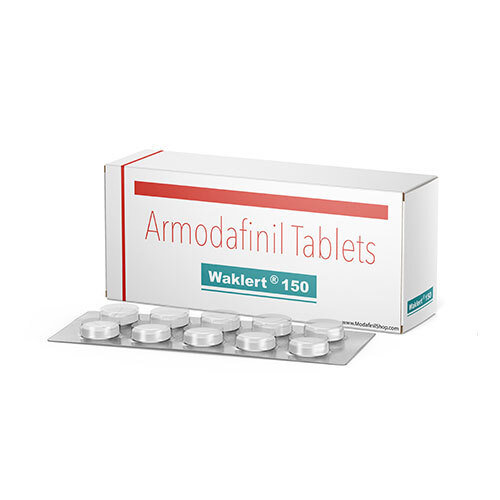Is Armodafinil a Controlled Substance?
Armodafinil is a prescription medication used to promote wakefulness in people with certain sleep disorders. It is also classified as a controlled substance in the United States. This status raises important questions about its risks, safe use, and legal implications.
What is Armodafinil?
Definition and Uses
Armodafinil is a wake-promoting medication approved by the U.S. Food and Drug Administration (FDA) in 2007. It is prescribed to improve alertness in adults with:
- Narcolepsy (excessive daytime sleepiness and sudden sleep attacks).
- Obstructive sleep apnea (OSA) (persistent sleepiness despite treatment of the breathing disorder).
- Shift work disorder (SWD) (insomnia and sleepiness caused by night or rotating work schedules) (Garnock-Jones, Dhillon, & Scott, 2009).
How It Works
The exact way armodafinil promotes wakefulness is not fully understood. It is known to bind to dopamine transporters and increase dopamine levels in certain brain regions, but it does not act like traditional stimulants such as amphetamines (Lankford, 2008). This difference is part of why its abuse risk is considered lower.
Administration
Armodafinil comes in oral tablets, usually taken:
- Once daily in the morning for narcolepsy or OSA.
- About 1 hour before work for SWD.
It can be taken with or without food, though food may delay peak effects by 2 to 4 hours (Darwish, Kirby, Hellriegel, Yang, & Robertson, 2009).
Legal Classification of Armodafinil
Controlled Substance Status
Armodafinil is listed as a Schedule IV controlled substance under the U.S. Controlled Substances Act. This means:
- It has accepted medical uses.
- It carries some risk of misuse or dependence.
- Its restrictions are less strict than Schedule II or III drugs. For example, prescriptions may be refilled up to five times within six months (Garnock-Jones et al., 2009).
Why It Is Classified
Armodafinil can be misused to stay awake or improve performance, though its abuse potential is lower than many stimulants. Research has shown reinforcing properties in animal studies, but overall risk is lower than with amphetamines (Lankford, 2008).
Risks and Side Effects of Armodafinil
Common Side Effects
Most patients tolerate armodafinil well. Common side effects include:
- Headache
- Nausea
- Dizziness
- Insomnia (difficulty sleeping) (Darwish et al., 2009)
Serious Side Effects
Rare but serious risks may include:
- Severe rash or allergic reactions
- Chest pain or abnormal heart rhythms
- Mood changes such as anxiety, depression, or hallucinations (Garnock-Jones et al., 2009)
Dependence and Withdrawal
Armodafinil has low risk of physical dependence, but psychological dependence and misuse are possible. Stopping the drug suddenly may cause fatigue or return of sleepiness. Severe withdrawal symptoms like seizures are not typical unless misuse or very high doses are involved (Lankford, 2008).
Interactions and Precautions
Drug Interactions
Armodafinil may affect the way the body processes other medications. Notable interactions include:
- Hormonal contraceptives (reduced effectiveness due to CYP3A4 induction).
- CYP2C19 substrates such as diazepam or phenytoin (effects may be increased).
- Warfarin (requires closer monitoring of blood clotting levels) (Garnock-Jones et al., 2009).
Special Populations
- Children: Not approved for use under age 17.
- Pregnant or breastfeeding women: Safety is not established; discuss with a doctor.
- Liver disease: Lower doses are recommended due to reduced clearance.
Safe and Legal Use of Armodafinil
- Always take as prescribed by a healthcare provider.
- Use the lowest effective dose for the shortest necessary duration.
- Do not share, sell, or give away the medication, as this is illegal and unsafe.
- Store in a secure place to prevent misuse.
Conclusion
Armodafinil is an effective treatment for excessive sleepiness in narcolepsy, obstructive sleep apnea, and shift work disorder. While it is a Schedule IV controlled substance, its abuse potential is lower than many stimulants. Patients can use armodafinil safely by following medical guidance, being aware of side effects and interactions, and respecting its legal restrictions.
FAQ
Can armodafinil be used for conditions other than sleep disorders?
Some doctors may prescribe it off-label for fatigue in other medical conditions, but these uses are not FDA-approved. Always discuss risks and benefits with your healthcare provider.
Is armodafinil addictive?
Armodafinil carries a low risk of dependence compared to stimulants like amphetamines, but misuse is still possible (Lankford, 2008).
Can I take armodafinil if I am pregnant?
The safety of armodafinil during pregnancy and breastfeeding is not well established. Women should consult their doctor before use.
Does armodafinil replace CPAP in sleep apnea?
No, armodafinil only helps with residual sleepiness. Treating the underlying condition with CPAP (continuous positive airway pressure) remains essential (Garnock-Jones et al., 2009).
References
- Garnock-Jones, K. P., Dhillon, S., & Scott, L. J. (2009). Armodafinil. CNS Drugs, 23(9), 793–803. https://doi.org/10.2165/11203290-000000000-00000
- Darwish, M., Kirby, M., Hellriegel, E. T., Yang, R., & Robertson, P. Jr. (2009). Pharmacokinetic profile of armodafinil in healthy subjects: Pooled analysis of data from three randomized studies. Clinical Drug Investigation, 29(2), 87–100. https://doi.org/10.2165/0044011-200929020-00003
- Lankford, D. A. (2008). Armodafinil: A new treatment for excessive sleepiness. Expert Opinion on Investigational Drugs, 17(4), 565–573. https://doi.org/10.1517/13543784.17.4.565








